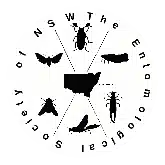Contents Vol. 27
GENERAL AND APPLIED ENTOMOLOGY
The Journal of the Entomological Society of New South Wales Inc.
VOLUME 27 CONTENTS
CANT, R. C., SPOONER-HART, R.N, BEATTIE. G.A,C. & MEATS, A. The biology and ecology of the Bronze Orange Bug, Musgravia sulciventris (Stål) – A literature review. Part I – Description, Biology, Host species and Distribution ……………………………… 19
The bronze orange bug, Musgraveia sulciventris (Stal) was classified more than 130 years ago and has been recognised as a pest of citrus for more than 100 years. During that time various articles of both scientific and anecdotal nature have been published. Whilst a number of aspects of the bugs biology and ecology have attracted detailed investigation, a number of fundamental areas have received scant attention. This paper collates all the relevant publications on the species and summarises their findings with respect to the insect’s classification, description, life cycle, host species and distribution and in doing so highlights those aspects of the bugs biology and ecology that require further investigation.
General and Applied Entomology 27: 19-29
CANT, R. C., SPOONER-HART, R.N, BEATTIE. G.A,C. & MEATS, A. The biology and ecology of the Bronze Orange Bug, Musgravia sulciventris (Stål) – A literature review. Part II. – Feeding, Control, Defensive Secretions, Pheromones, Reproduction and Aggregation …………….. 30
The bronze orange bug (Musgraveia sulciventris Stal) has been classified as a minor pest of citrus for many years. Its status as a minor or infrequent pest of orchards and home gardens has been noted by numerous authors. An earlier review covered publications relating to the classification, description, life cycle, host species and geographic distribution of the insect. This review covers those publications which have investigated behavioural and cultural aspects of the bug’s biology which influence its pest status. These include feeding and damage, control measures, defensive reactions pheromones, aggregation dispersal and reproductive biology. A number of these aspects have attracted detailed research whilst others have not. This paper provides a summary of their findings, combining research results and anecdotal reports to form a collation of the current knowledge on this species.
General and Applied Entomology 27: 30-42
KALDOR, C. J. & BAKER, G. L. Estimation of mortality of Chortoicetes terminifera (Walker) (Orthoptera, Acrididae) from parasitism by Blaesoxipha rufipes (Maquart) (Diptera: Sarcophagidae) ………………………. 49
A method is given for correcting field determined rates of apparent parasitism for sampling inefficiency and a formula given to estimate the mortality of a host generation which takes into account parasite turnover during the susceptible stage of the host.
General and Applied Entomology 27: 49-56
MEATS, A. Demographic analysis of sterile insect trials with the Queensland fruit fly Bactrocera tryoni (Froggatt) (Diptera: Tephritidae) …………….. 2
Reports of 10 SIT campaigns are reviewed and compared from a demographic perspective. The campaigns ranged from treatments of ‘spot’ infestations, through operations in small to medium country towns to the large campaign at Perth. Conclusions are made about (a) the effective ratio of sterile to wild flies in relation to the size and potential growth rates of target populations, (b) release rates required and the distribution pattern of releases. The efficacy of pre-baiting and optimum release protocols are discussed and a new strategy for suppression in towns posing a risk to non-endemic and quarantine areas is proposed.
General and Applied Entomology 27: 2-12
SMITH, D., FREEBAIRN, C.G. & PAPACEK, D.F. The effect of host density and parasitotd inoculum size on the mass production of Leptomastix dactylopii Howard (Hymenoptera. Encyrtidae) and Aphytis lingnanensis Compere (Hymenoptera: Aphelinidae) in Queensland ………………. 57
Leptomastix dactylopii Howard and Aphytis lingnanensis Compere are mass reared for augmentative release in Queensland citrus in the spring – early summer against citrus mealybug Planococcus citri Risso and red scale Aonidiella aurantii (Maskell) respectively. This paper reports the results of studies on the effects of host density and inoculum size on parasitoid production in a system using P. citri as host for L. dactylopii and oleander scale Aspidiotus nerii Bouche for A. lingnanensis, both grown on butternut pumpkins, Cucurbita moschata (Duchesne ex Lam.) Duchesne ex Poiret (Cucurbitaceae). For L. dactylopii, highest production was achieved when mealybugs (21 days old at 25° C) were exposed to a parasitoid inoculum of 3 per cm². A host density of 20 per cm² (6,000 per pumpkin) was most efficient because it resulted in higher levels of parasitism, produced numbers of parasitoids only slightly less than the higher density and suffered lower losses due to rotting of the pumpkins. A. lingnanensis production was highest when the density of oleander scale was 60 per cm² and the parasitoid inoculum 33 per cm².
General and Applied Entomology 27: 57-64
SMITHERS, C. N. Psocoptera from the Western Australian wheatbelt ……….. 13
Psocoptera collected during a survey of insects from litter in regenerating wheatbelt habitats at Tammin, Western Australia include three new species, Liposcelis tamminensis sp n., Liposcelis australis sp. n. and Pachytroctes dayae sp. n. Ectopsocus vachoni Badonnel was collected for the first time from Australia and Liposcelis decolor (Pearman) for the first time on the Australian mainland from a habitat other than stored products.
General and Applied Entomology 27: 13-18
SMITHERS, C. N. New species and new records of Ectopsocidae (Insecta: Psocoptera) from the Mount Royal area,. Hunter valley, New South Wales …. 43
Two new species, Ectopsocus hartleyi sp. n. and E. aldretei sp. n., and ten described species of Ectopsocus McLachlan are recorded from the Mount Royal area in the Hunter Valley, New South Wales.
General and Applied Entomology 27: 43-48
